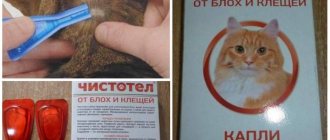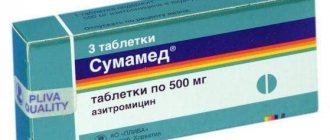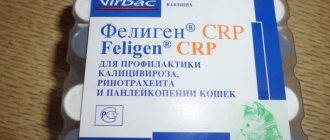Nature is far from being as ideal as it is imagined by the general public.
It is nature that is to blame for the fact that we get sick, grow old and ultimately die. It is no secret that a similar scheme applies to animals, including cats.
Sometimes owners are forced to watch their pet suffer without being able to help him. Taking into account this fact, today we will talk in detail about how to euthanize a cat at home if it has been exposed to a terrible illness, has received an injury incompatible with a full life, or has become so old that every step is given to it with terrible pain and difficulty, because In this case, euthanasia will help save the animal from suffering.
Reasons for euthanasia
Don’t think that putting a suffering animal to sleep is a crime. No more humane methods of helping hopeless patients have been invented. There are several basic reasons why doctors decide to euthanize a cat.
Euthanasia of a cat
Rabies
A dangerous viral pathology that threatens the life of not only the animal, but also its owner.
It is impossible to cure rabies - after pathogens enter the bloodstream, they quickly multiply, the pet loses clarity of consciousness and begins to attack people close to it. If the bite is successful, the owner will face the same fate: a long and painful death from dehydration and damage to the nervous system.
Important! When a diagnosis of rabies is made, the domestic cat must be euthanized. The veterinary hospital does not provide treatment due to the high risk of infection of medical personnel.
Oncology
Malignant neoplasms quickly increase in size, gradually spreading throughout the body through metastasis. Advanced forms of therapy are not subject to treatment - in other cases, the cat is prescribed surgical excision of the tumor.
For older cats or those with terminal cancer, euthanasia is recommended. Attempts to cure a pet are useless - veterinarians do not advise prolonging the death throes of a furry pet.
Important! An animal can be euthanized only with the consent of the owner - the veterinary hospital does not have the right to carry out the procedure without filling out the appropriate documents.
Injuries incompatible with life
Complex fractures and ruptures of internal organs are almost impossible to restore. For some time, observation tactics are established for the furry patient - some animals manage to survive even after being hit by a heavy truck.
If no improvement is observed, the veterinarian issues a conclusion that the injuries caused by a fall or collision are incompatible with life. Medical killing is the best way to stop the prolonged agony and stop tormenting your pet.
Making a final diagnosis
Respiratory failure
The pathological condition is divided into four large subgroups:
- Hyperventilation of the lungs or general disturbance of the breathing process. The problem is caused by traumatic brain injuries, hydrothorax (fluid accumulation in the lungs), and strong blows to the chest area. As a result, the cat practically cannot breathe and suffers from pain.
- Trauma and impaired functionality of the lungs themselves are associated with tissue swelling, bronchospasms, and an advanced form of pneumonia (pneumonia).
- Parasitic damage - inflammatory processes in the lung tissues are provoked by the migration of roundworm larvae from the area of the digestive tract.
- Malignant and benign tumors are typical for older cats.
The above pathologies lead to the development of respiratory failure. The animal gradually dies from lack of oxygen and necrosis (death) of brain tissue.
Incurable disease
Diseases that cannot be treated or treated surgically also include:
- stopping the functioning of the digestive and urinary system;
- leptospirosis and infectious peritonitis (inflammation of the abdominal cavity with suppuration);
- inflammatory processes in the spinal cord or its ruptures - as a consequence of previously developed renal failure.
Natural death
Some owners believe that their cat should die without assistance. This may be for religious or moral reasons, when people feel that they do not have the right to choose death for their cat, or simply cannot decide to take such a step.
In this case, you should understand that the death of a pet can be either peaceful and calm, or terrible and repulsive. Unfortunately, it is difficult to say for sure whether everything will happen quickly and painlessly, or whether the process will be lengthy and accompanied by terrible torment. In the latter case, the owner will have to witness the suffering of his friend, memories of which can remain in the memory for a long time, causing a feeling of guilt.
This is your animal, your choice and responsibility is also yours.
Methods of painless euthanasia
How to worm a cat at home
The method refers to irreversible processes, with the deliberate deprivation of the life of an animal under constant control. During the manipulations, dysfunction of the nervous, cardiac, and pulmonary systems gradually occurs.
Important! The technique is intended to stop the torment of a hopelessly ill organism - for good. For the animal it is painless.
How do they euthanize sick cats in veterinary clinics? Regardless of the location, the process takes place in several steps:
- The pet owner signs all necessary documents confirming his consent to the procedure. The decision is made voluntarily; no one can force the owner of a sick animal to agree to the operation. The veterinarian's opinion does not matter.
- The cat is given a sleeping pill or painkiller, with which it falls asleep and completely loses sensitivity. If such a clause is not stipulated in the contract of a pet clinic or field specialist, then it means they are working on scammers.
- Muscle relaxants are administered after confirmation of the transition to the deep phase of sleep - the pet does not feel anything and does not react to external stimuli. The result of their action will be a gradual slowdown in muscle activity, stopping the work of the heart muscle and stopping breathing.
- The heart is listened to; if there are no contractions, death is declared.
Medicines
The owner can be with the cat being euthanized at all times or refuse to attend the procedure. Before carrying out the manipulations, the veterinarian describes in detail all phases, focusing on key points. Doctors advise standing near the pet only during the introduction of anesthesia, and then leaving the manipulation room. After the administration of muscle relaxants, convulsions occur, which are perceived as a painful reaction to the injection.
Sedatives
Veterinary clinics can use:
- Xylazine hydrochloride;
- Xila;
- Xylanite;
- Rometar.
Important! The drugs are analogous in their spectrum of action and are used in veterinary medicine for a sedative effect. In large dosages, the drugs provoke respiratory arrest.
Anesthetics
Painkillers include:
- Pentobarbital sodium;
- Sodium etaminal;
- Sodium thiopental;
- Propofol;
- Droperidol;
- Zolazepam.
Medicines are responsible for suppressing the central nervous system, placing the patient under deep anesthesia, and can provoke a stop in the functioning of the respiratory center.
Muscle relaxants
Block neuromuscular conduction. When euthanasia can be used:
- Ardoin;
- Aperomide;
- Vero-Pipecuronium.
Antiarrhythmic
In veterinary medicine they use:
- Lidocaine;
- Versatis;
- Xylocaine;
- Helicain.
Large dosages cause cardiac arrest due to the cardiotoxic effect.
Important! It will not be possible to legally kill a healthy cat - not a single station will undertake the procedure without reason.
When contacting dubious specialists, you can expect painful and long agony for a dying animal - most of them break the rules and administer muscle relaxants without anesthesia, leaving the pet to suffocate in full consciousness.
What to do with the animal's body (cremation or burial)
After euthanasia, the animal must be buried or cremated. In any of these cases, you will have to prepare in advance. There will be little time, because the corpse will begin to decompose. You need to bury on the day of euthanasia (or the next). You need to hurry especially in the hot months.
You need to bury your cat in a special coffin or box (depending on your budget)
It is important to choose the right burial site. Some cities have special cemeteries for animals. If there is no such cemetery, you can choose another place (on your site) away from the reservoir. It is important to ensure that burial of the corpse is not prohibited in the chosen location. You cannot bury a corpse in public places. If you don't want to look at the body, cremation can be done. Any cat that has been euthanized can be cremated if the veterinary clinic has a crematorium. You need to pay extra for this procedure, but burying the ashes will not be so troublesome. In some clinics you can leave the body to the veterinarians, they will cremate it themselves and then bury it.
Clinics, as a rule, offer to leave the body - they decide this issue themselves.
Feniks, forum visitor
https://m.nn.ru/t/29137263
Euthanasia at home
How to train a cat to use the toilet: instructions at home
Some owners believe that it is better to carry out the procedure at home so that the animal is less nervous. Almost all veterinary stations provide such services, with a specialist visiting on the agreed day.
The doctor will first get acquainted with the cat's medical history and only then begin to euthanize. The presence of the owner in the room is not necessary - only at his personal request.
Examination by a veterinarian at home
Important! The main problem with the home procedure is the question of the body of the deceased - in the hospital the owner will be offered cremation. Before calling a veterinarian, you can ask whether he provides additional services with the collection of a deceased cat.
Turning points
The owner of a cat with a serious illness needs to decide what moment is considered a turning point. Even animals with poor health, older cats, as a rule, have good days. Are you not ready to make a serious decision just because your pet sometimes becomes very ill? But prepare for the fact that the moment of need to make a decision may come in the future. If there are many more bad days than good ones, the animal will begin to suffer from severe pain that cannot be relieved by drugs, and the quality of its life will greatly deteriorate - this is the very moment.
It is painful to part with a pet, but attempts to prolong its life are not always appropriate. It is more important that the cat live a full life, and not exist. If the quality of life has greatly decreased, euthanasia becomes the only salvation for the doomed animal. If your cat is suffering greatly and medicine is powerless to help her, you have the right to decide to alleviate her suffering in the only available way.
Options for putting a cat to sleep temporarily
Euthanasia refers to a reversible process, as a result of which the pet falls asleep under the influence of medications, and not on its own. All of them affect certain parts of the brain.
How to clean a cat’s ears at home: options for how and what to wash with
How to put a cat to sleep? Temporary induction of sleep is carried out using:
- Droperidol is a neuroleptic drug from the butyrophenone subgroup, with a sedative and tranquilizing spectrum of action. The drug stops motor activity, relaxes muscles, and is often used in premedication.
- Proforol - a general analgesic effect is achieved by depression of the central nervous system and is produced in the form of an emulsion.
- Proforol is a muscle relaxant classified as a curare-like substance.
- Ditilina - relaxes muscle tissue, slows down the heartbeat and heart function.
- Thiopental - causes a state resembling deep anesthesia.
- Dimetrol - with a hypnotic effect due to central nervous system depression.
- Zolarepam is a pain reliever.
The listed medications are not a complete list of medications used in animal hospitals. Most of them cannot be purchased at a pharmacy without a doctor's prescription.
Important! Sleeping pills for cats cannot be used at will. Incorrect dosage selection will cause serious poisoning, and in difficult cases, death.
Sleeping pill for hair cutting
Before a long trip, moving, getting a haircut or visiting a veterinarian, you can use mild sedatives or homeopathic medications. They are prescribed by a doctor when participating in cat shows or when adding a second animal to the house. Popular sleeping aids for cats for transport that allow them to be easily trimmed include:
Kot Bayun - sleeping pills for cats
- Kot Bayun - produced in tablets and tincture, intended for oral administration. It contains medicinal plants and has a moderate sedative effect.
- Stop Stress - relieves the effects of nervous overload, calms. The mild effect is due to the component composition: mint, motherwort, hops.
- Fitex - calms, normalizes sleep, improves the condition of the nervous system. Made in drops, it contains valerian, motherwort and hops.
Important! Herbal medicines are the best option for a nervous kitten who hasn’t slept for days. They are not addictive with prolonged use.
Life goes on!
I still want to end this difficult topic on an optimistic note. With the departure of a pet, a huge emotional hole is formed around us, not even a hole, but a pit frightening with emptiness, we become sad and lonely...
From personal observations of working in a veterinary clinic. Two types of behavior can be observed in owners who have lost an animal: - Never again! — Can you tell me where I can get a kitten of the same breed?
Personally, I am for the second type. Because it's right. Yes, you loved your pet very much, and it seems to you that no one can replace him. This is true. But there is no need to replace it! The new pet will be different. No worse or better than before, just different. And you will love him no less, maybe a little differently, but you will definitely love him. And he will love you...And this is not a betrayal of an old friend who will forever remain a bright image in your memory.
Cats and people are made for each other. So why deprive yourself of the joy of communicating with a cute creature, and deprive him of the chance to find love and care in your face!
Can't do without them!
PS That's it! The difficult part is behind us. All other articles will be only for health in the truest sense of the word.
Cost of euthanasia in a veterinary clinic
How much does it cost to euthanize a sick cat? Price depends:
- depending on the regional location of the clinic - in small towns the cost is lower than in big cities;
- veterinary hospital level;
- pet's body weight;
- additional services - travel to home conditions, subsequent cremation.
The average price varies from 500 to 5000 rubles; in Moscow, the average cost of the procedure is about 2750 rubles. A doctor’s visit to your home will increase the total cost by 1000-1500 rubles, cremation will add 500 or more rubles.
Euthanasia of an incurable cat is not murder, but an opportunity for the animal to stop suffering. The procedure will stop the suffering of the animal and its owner - the latter will not worry about his own helplessness.
Physical condition assessment
Before making an important decision about the fate of a sick or older pet, observe it. Analyze her physical condition.
- How much does she weigh and does she eat well? Dental problems in older cats make it difficult to eat. Animals tend to refuse to eat. Refusal to eat also happens if the cat has pain in the joints or stomach. If a cat vomits after eating, it loses weight and becomes weaker. There may be many reasons for this, but still, this is a reason to think about the future fate of the animal.
- Can she drink? Older cats need more water. The cat should be able to independently approach its bowl. If an animal is in a lot of pain, it will not move from its place, experiencing thirst, and dehydration is fraught with health consequences.
- Does she go to the litter box? Cats are known for their cleanliness and suffer if they cannot clean their fur on their own. If, due to constant urinary incontinence or diarrhea, the fur loses its attractiveness and smells bad, this causes discomfort to the animal. A cat that suddenly stops going to the litter box requires the owner's attention.
- Is there pain at rest? Pain due to movements deprives the cat of the ability to move, but painful sensations are sometimes bothersome even at rest. It is very important for the animal to be at rest, without pain. Otherwise, she experiences suffering and becomes more aggressive. If your pet is constantly in pain, think about her quality of life.
Each of the signs described above is not a direct indication for euthanasia. If they are present in aggregate, this is a reason to think about the animal’s quality of life.
Specifics of the procedure
At first glance, it may seem that euthanizing pets is an easy and quick procedure: just one injection is enough.
However, in reality everything is somewhat more complicated. No one wants to cause additional suffering to their dog or cat during euthanasia, since these are beloved pets. That is why humane euthanasia of animals involves a procedure that is carried out in two stages.
Because of the large number of unwanted companion animals and the lack of good homes, sometimes the most humane thing a shelter worker can do is to give the animal a peaceful release from a world in which dogs and cats are often considered "surplus" and unwanted, the American Humane Association says It is the only acceptable method of euthanasia for cats and dogs in animal shelters.
Injections into the hearts of conscious animals are unacceptable. Inhalants, decompression, drowning, electrocution, shooting and other methods are also unacceptable as they rarely provide instant death and cause suffering to the point of death. Some medications can cause discomfort if injected too quickly or at too high a dose, and some, such as strychnine, can cause severe convulsions, muscle contractions, or cardiac arrest in animals.
The moral side of the procedure
Of course, for many, euthanasia of a cat or dog is a real abuse of domestic animals. From a psychological point of view, it is very difficult to decide on such an act. Nevertheless, you should not despair, torment or worry about this, since euthanasia of animals is sometimes the only option for getting rid of pain.
It's natural to feel upset and emotional when your pet dies. Don't be afraid to show your feelings to your veterinarian—he or she will completely understand. It also takes time to get over your loss, and you may go through a mixture of emotions - confusion, sadness, loneliness and even anger. This is completely normal and part of the process of coming to terms with your loss. You shouldn't feel guilty or blame yourself for your cat's death - the decision to euthanasia is usually only reached as an act of real kindness to avoid suffering.











